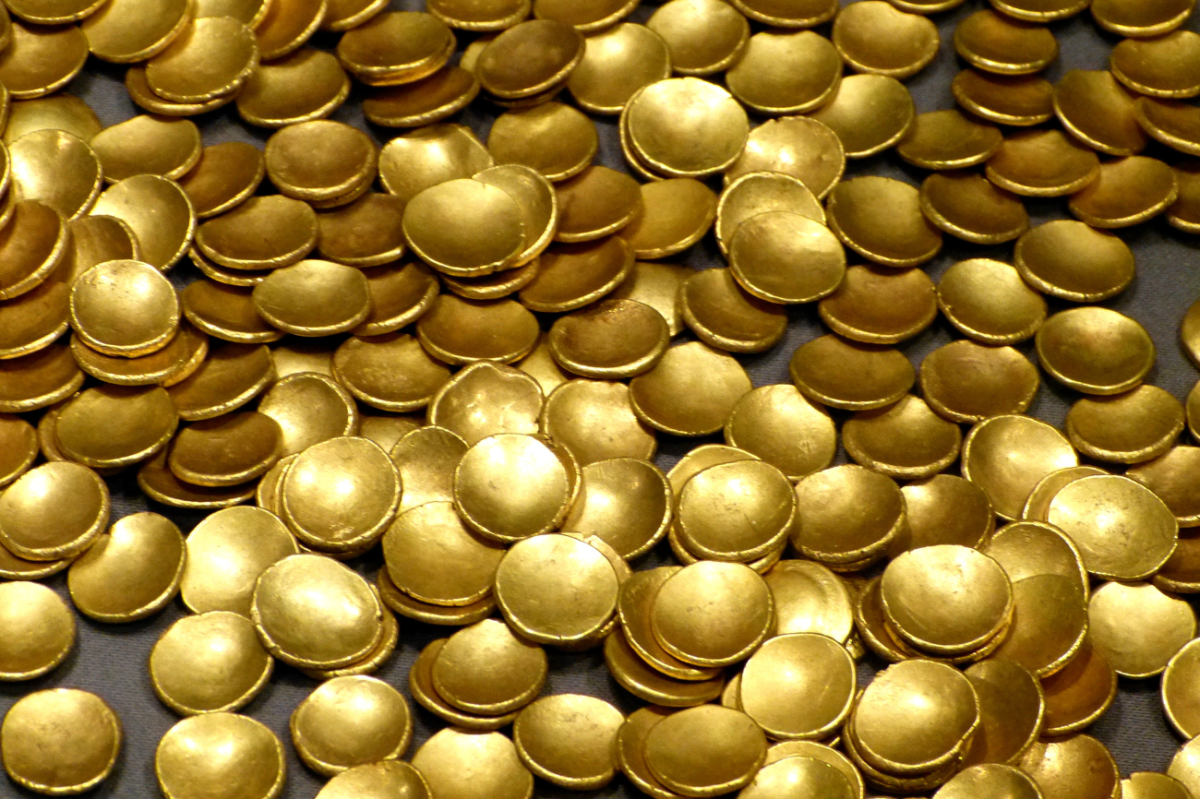The Surprising Truth Behind a Pot of Gold at the End of a Rainbow
Posted on Categories Discover Magazine

St. Patrick’s Day is right around the corner, and with it comes tales of mischievous leprechauns and the pots of gold that they guard at the end of rainbows.
You may already know that there is no “end” of a rainbow — science tells us that their arch shape is simply an illusion. In reality, while those of us on the ground can only see the light reflected by raindrops above the horizon, viewers in aircraft can sometimes see a rainbow’s full, 360-degree circle.
But that doesn’t mean the myths surrounding the discoveries of Celtic gold are totally untrue.
Going for Gold
Six years ago, volunteer archaeologist Wolfgang Herkt received permission to search a local farm in Brandenburg, a state in northeastern Germany. He was rewarded for his efforts with the unexpected discovery of 11 Celtic gold coins.
Rainbow Gold Coins
After he reported the cache to the Brandenburg State Heritage Management and Archaeological State Museum, renewed searching uncovered an additional 30 coins.
“This is an exceptional find that you probably only make once in a lifetime,” Herkt said in a statement. “It is a good feeling to be able to contribute to research into the history of the country with such a find.”
The coins are unusually shaped: Rather than appearing flat like those we use today, the newfound gold pieces are curved and almost resemble small cups.
Read More: 6 Times We Tried to Extract Gold from Seawater
Pot of Gold at the End of the Rainbow
Marjanko Pilekić, a numismatist and research assistant at the Coin Cabinet of the Schloss Friedenstein Gotha Foundation in Germany, dated the hoard to between 125 B.C. and 30 B.C., minted during the late Iron Age.
Rainbow Cups
Later on — sometime between the Middle Ages and the 18th century by some estimates — coins of this type earned the nickname regenbogenschüsselchen, which translates to rainbow cups from German.
It’s a fitting name for bits of gold that were often stumbled upon in plowed fields after a particularly heavy rainfall; their concave shape may even have allowed rain to pool within them, reflecting the sunshine and making them easier to spot.
Popular belief held that rainbows, a common sight after a drizzle, left the coins behind wherever they touched the earth. They were even thought by some to bring good luck or good health.
Celtic Coins
Rainbow cups are most often associated with the Celtic tribes of southern Germany, and in particular the La Tène. This culture arose in the mid-fifth century B.C., when the Celts were introduced to Greek and Etruscan influences that originated south of the Alps.
Staters
Of the coins found in Brandenburg, 19 are staters — mimics of the gold and silver coins found in ancient Greece. These are larger, with an average diameter of 0.7 inches and a weight of a quarter of an ounce, while the rest of the cache are considered 1/4 staters because they’re about a quarter of that size.
The entire hoard is smooth-faced with no discernable images. But that’s not true of all rainbow cups found in the past.
Often, these have representations of a torque — an ancient collar or necklace with open ends — and spheres on one side. On the flip side, you might find an abstract head or bird’s head, a star, a hand, a cross or some other ornament.
Rainbow Pot of Gold
“Not only is it the second-largest hoard of smooth rainbow bowls of this type and by far the largest find of Celtic coins in Brandenburg,” Pilekić said of the 2017 discovery in a statement, “but the site is also far from the actual distribution area.”
Far From Home
While the La Tène culture seemingly spread to regions as far as England, France, Belgium, Switzerland, Austria and the Czech Republic, the Celts never lived in Brandenburg. In fact, the German state is hundreds of miles from any place known to have been occupied by them.
Therefore, the unexpected discovery has sparked many questions about prehistoric Europe’s widespread trade networks.
We know that spare change in the ancient world wasn’t used solely for monetary purposes, as it is today; there is plenty of evidence of coins being minted for use as diplomatic gifts and even in religious rituals, among other things.
Whoever buried the 41 rainbow cups in a Brandenburg field gets to keep their secrets for now — though we can probably rule out a mischievous leprechaun as the culprit in question.
Read More: Turning Lead Into Gold